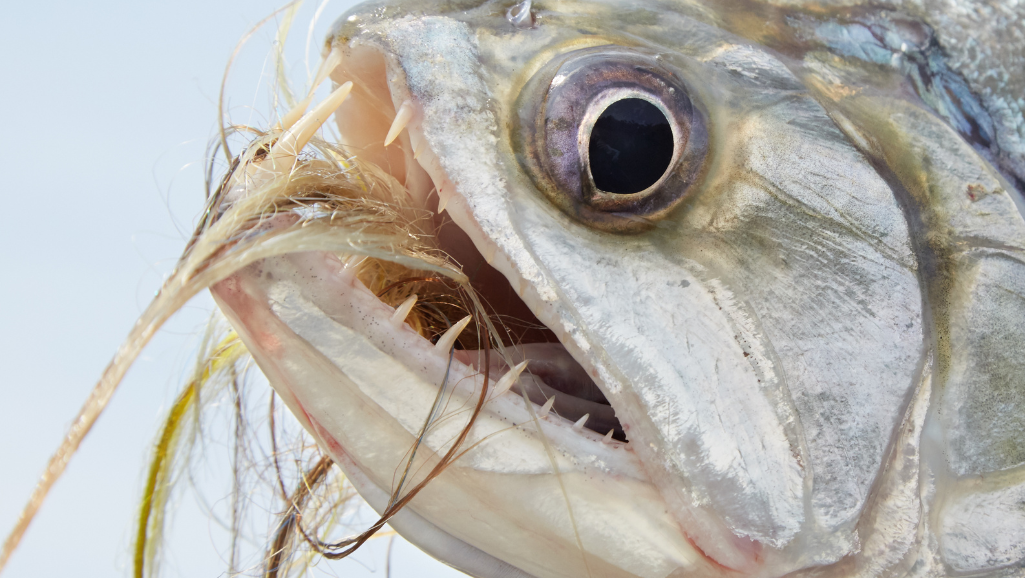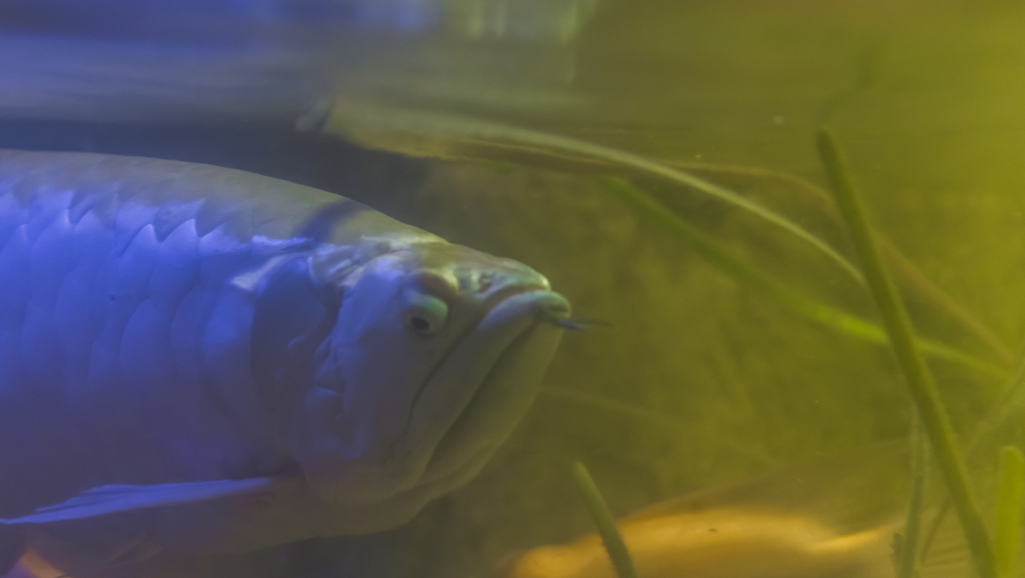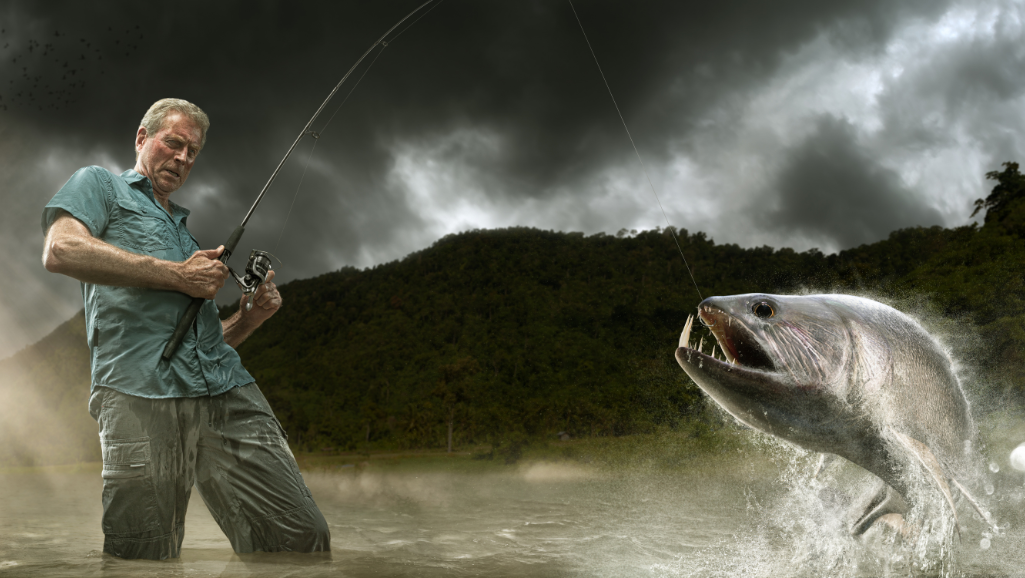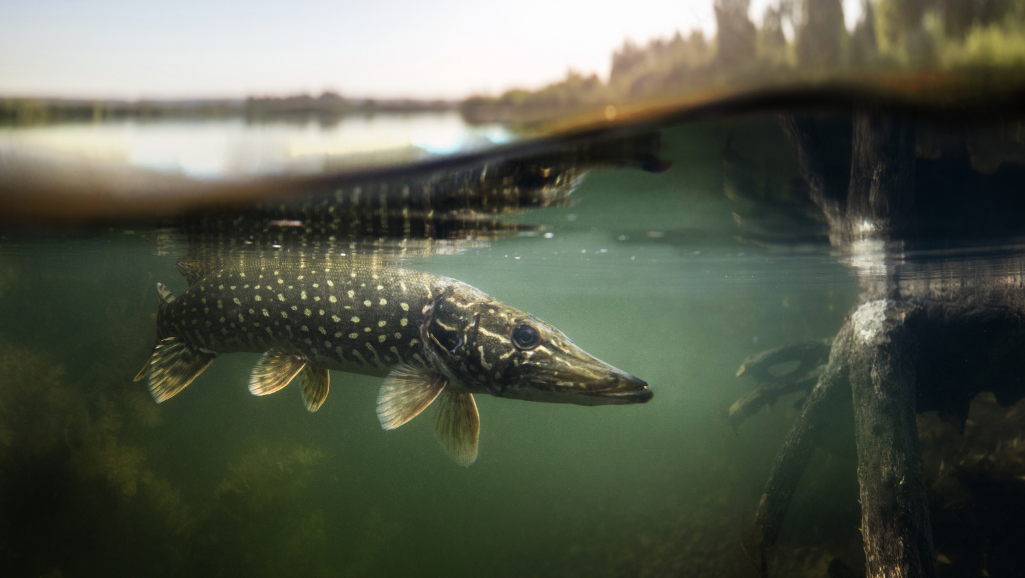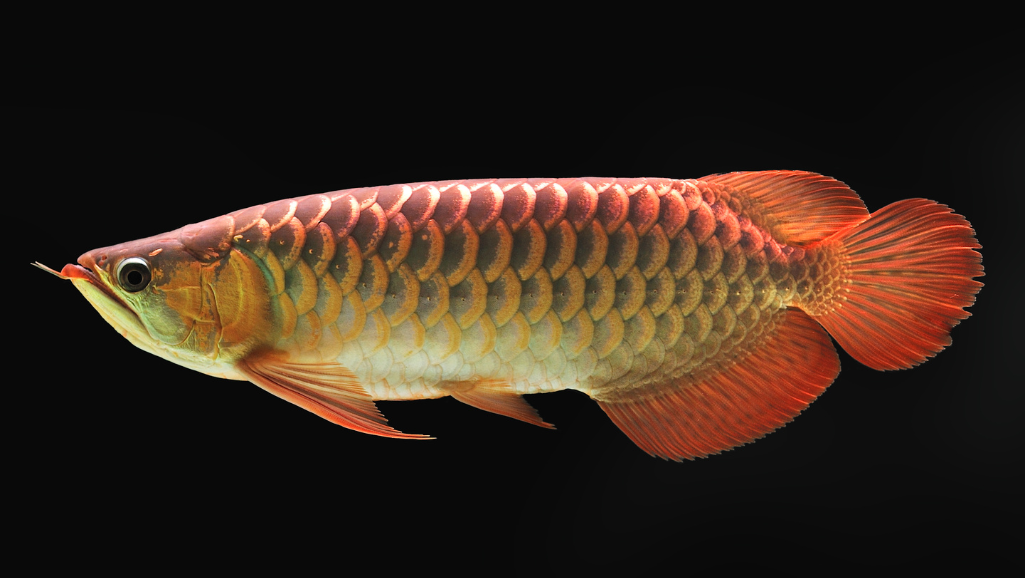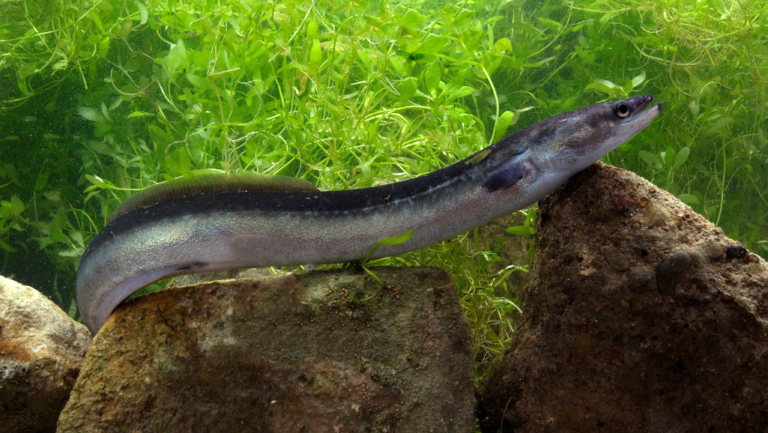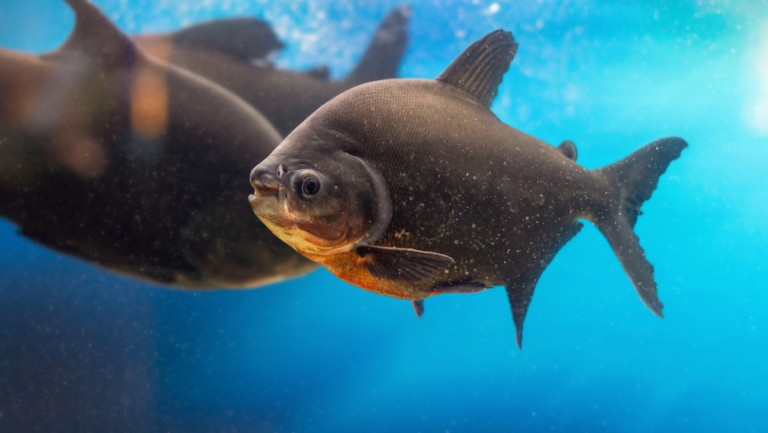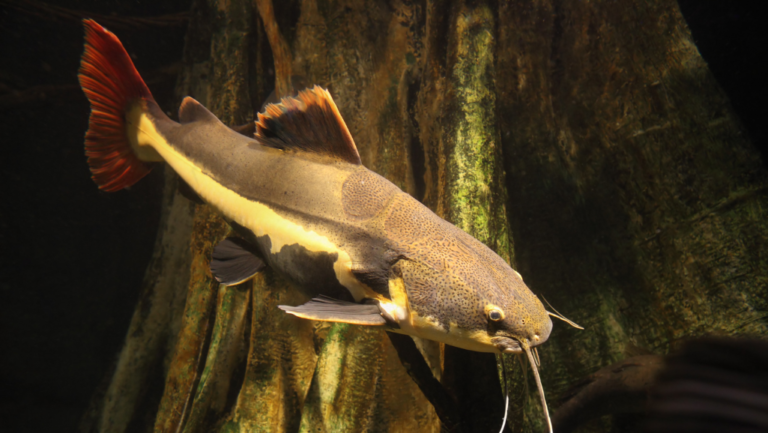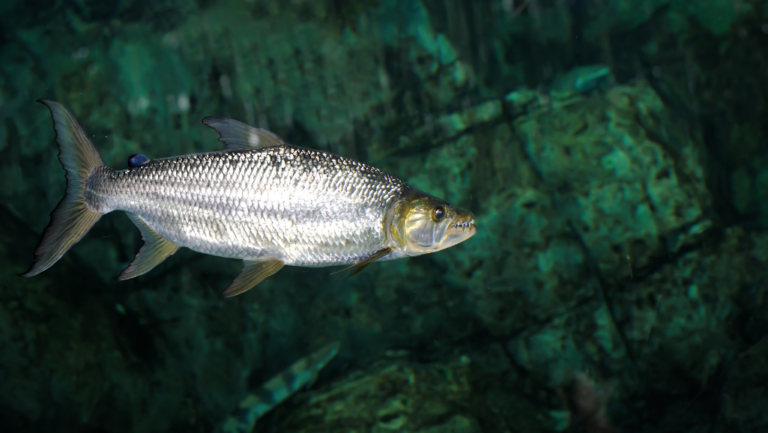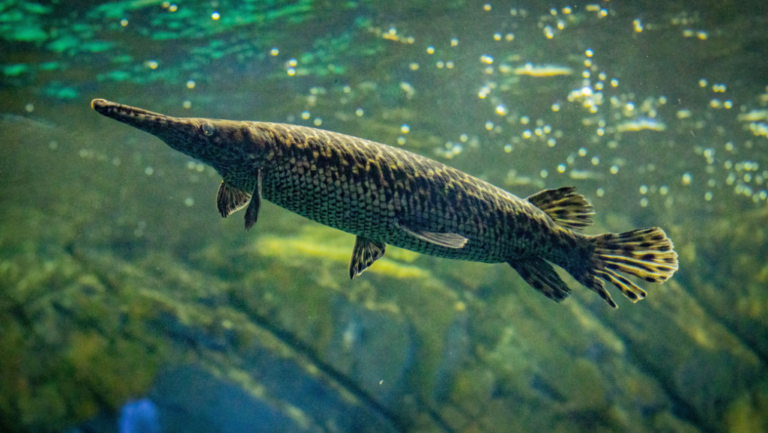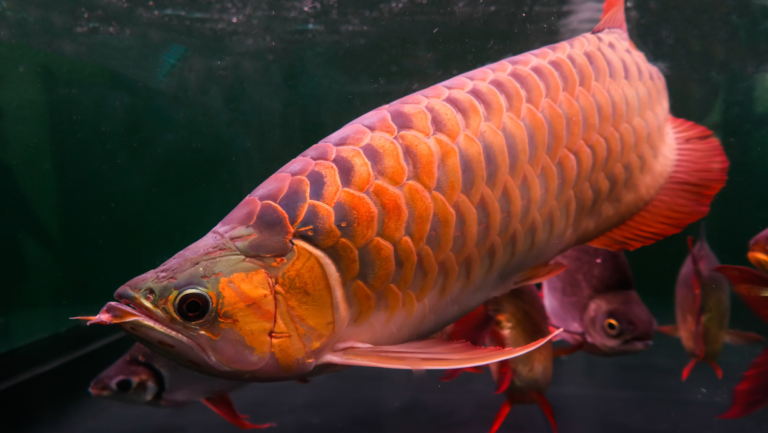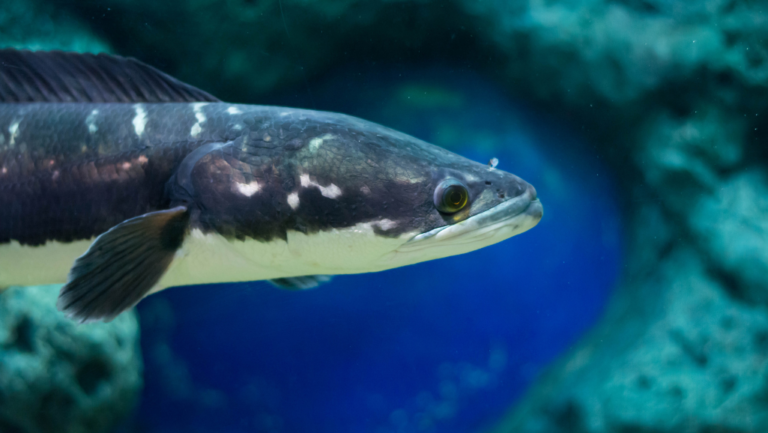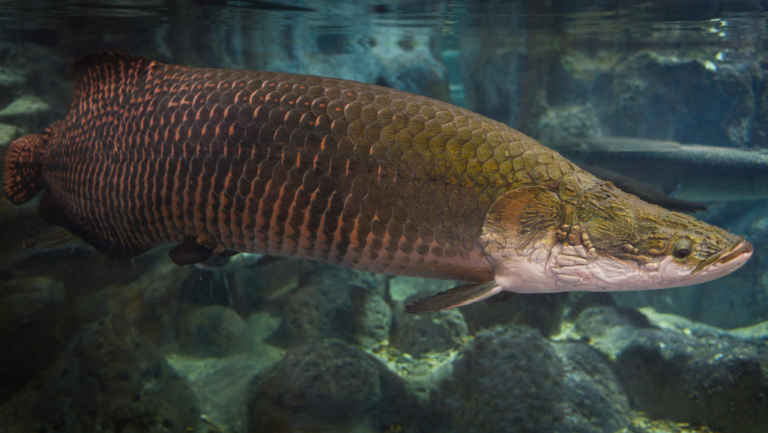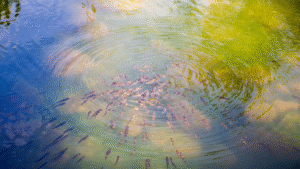Explore the fascinating world of the Payara fish, also known as Hydrolycus scomberoides or the Vampire fish. This powerful freshwater predator calls the Amazon Basin home. It’s a standout in South America’s aquatic world.
In exotic aquarium circles, the Payara is famous for its sharp fangs. It’s a force to be reckoned with in any aggressive fish community.
Key Takeaways
- The Payara fish is known for its long fangs and sleek body, making it a stunning sight in water.
- South American fish like the Payara need a lot of care, showing their lively, energetic natural home.
- Payaras can grow up to 3.5 feet in the wild, so they need a big tank to thrive.
- They don’t get along well with other fish because of their hunting and aggressive nature.
- It’s important to feed them right, keep their tank conditions perfect, and watch their health to keep them alive in captivity.
- Exotic aquarium species like the Payara give us a rare look at the Amazon’s incredible diversity.
Overview of Payara Fish Characteristics
The Sabre tooth barracuda, also known as the Payara, has unique physical features. These carnivorous fish are visually striking and fascinating in their biology and behavior.
Physical Appearance
The Payara is often called the Vampire fish because of its sharp, elongated fangs. These teeth can grow up to 6 inches and fit perfectly in its upper jaw. This allows it to hunt efficiently in its natural habitat.
The fish’s body is built for speed, with a powerful fan-shaped caudal fin. This fin is essential for moving through the fast currents of its home waters.
Size and Lifespan
Payaras are impressive in size and appearance. In the wild, they can grow up to 3 feet long and weigh 35 pounds. In captivity, they usually don’t grow beyond 12 inches.
They can live between 6 to 12 years. This depends on their environment and the care they receive.
Common Color Variations
The Vampire fish is typically silver or silver-gray. This color helps them blend in with the water and adds to their mysterious look. Iridescent hues and white spots make them even more striking.
Darker markings around their fins and tail add contrast. This makes their appearance even more captivating.
Understanding these characteristics shows why the Payara or Sabre tooth barracuda is so celebrated. Their unique look and lively nature make them a favorite among aquarists and scientists.
Natural Habitat of Payara Fish
The Payara, known as the “vampire fish,” is a South American fish with a scary look and strong build. It comes from the Amazon basin, a place full of life. This area is perfect for the Payara to live and grow.
Geographical Range
Payara fish live in the rivers and streams of the Amazon basin. They are found in the Orinoco River too. This shows how closely the Payara is tied to South America’s water life.
Preferred Environment
Payaras love to live in fast-moving waters like rapids or near waterfalls. These places help them hunt better. The fast water gives them the perfect spot to catch their prey.
Water Conditions
Payaras need certain water conditions to stay healthy. They prefer water that’s full of oxygen, which they get from fast currents and falls. They also like it when it’s not too bright, as too much light can stress them out. The water’s pH level should be just right, so they and their home can thrive.
Learning about the Payara’s home is not just interesting. It also shows why we need to protect the Amazon basin. This helps ensure these amazing fish can keep living in their natural habitat.
Diet of Payara Fish
The Payara fish, also known as the vampire fish, is a carnivorous fish. It has unique feeding habits that show its fierce nature. The Piscivorous diet of the Payara allows it to thrive in both the wild and exotic aquarium settings.
Hunting Techniques
Payara fish are known for their agility and power. They hunt using forceful strikes, using their sharp fangs to catch prey. This method is very effective in their fast-moving waters.
They can eat fish up to half their size. This shows their strong predatory skills.
Types of Food
In the wild, Payara’s diet mainly consists of other fish. They play a key role in controlling the population of other carnivorous fish. In exotic aquariums, they need a diet of non-living food items.
This diet might include smelt, mackerel, squid, and clams. It ensures their feeding habits are similar to their natural diet.
Feeding Behavior
Changing a Payara’s diet to accept dead food in an aquarium can be tough. Experienced aquarists use creative methods to mimic live food. They attach threads to frozen or thawed fish to make it look like live prey.
But, these methods need caution. Payaras are very strong and can hurt if they are not handled carefully during feeding.
Keeping a Piscivorous diet in captivity is key for their health. It also affects their aggressive nature. A Payara feeding regime that mimics their natural hunting is good for both the fish and the aquarist.
Behavior and Social Structure
The Payara fish behavior is quite interesting, thanks to their fierce nature. They live in the rough waters of South America. Their unique ways of acting are key to their survival.
Knowing about the South American fish social structure is important when talking about Payara. They are very territorial. Even though they sometimes school as young ones, adults usually stay alone. They only come together for migration or mating.
Aggressiveness
Payara are known for their bold hunting. They have sharp teeth for catching smaller fish. In tanks, their aggression can grow if they don’t have enough space. This can lead to stress and fights with other fish.
Territoriality
Payara have strong territorial instincts. They need a lot of space to avoid fights with others. In aquariums, this means choosing the right tank size and fish carefully. Owners should keep the tank simple to prevent injuries from the Payara’s fast movements.
Schooling Habits
Young Payara may school together, but this is just a temporary thing. As they grow up, they become more solitary. They only come together during breeding season or in crowded tanks.
For more info on keeping Payara, check out fish care articles. For example, the guide on Celestial Pearl Danio also talks about the social and environmental needs of fish.
Learning about Payara fish behavior and South American fish social structure makes the hobby more rewarding. It also helps keep these amazing fish healthy in both the wild and in tanks.
Keeping Payara Fish in Aquariums
Keeping exotic aquarium species like the Payara, also known as Hydrolycus scomberoides, is a challenging but rewarding task. These fish have sharp fangs and agile bodies. They need the right Payara fish tanks and detailed tank setups.
Tank Size Requirements
The Payara fish is huge and needs lots of space. Start with tanks of 250 gallons for juveniles. As they grow, move to tanks of 500 gallons or more. They can grow up to 4 feet long.
They grow fast, 2-4 inches a year after they stop being juveniles. This means they need big Payara fish tanks to move around.
Essential Tank Equipment
The Payara fish is strong and needs strong tank equipment. You’ll need high-capacity filters to handle their waste. They also need strong water movement and oxygen devices to mimic their natural habitat.
Lighting should be moderate, with spots, to match the deep waters they come from.
Filter and Water Conditions
Advanced filtration systems are key for clean water. Hydrolycus scomberoides likes clean, oxygen-rich water like the Amazon’s rivers. Change the water 30-40% every two weeks to keep it clean.
Keep the water temperature between 75-82°F. This keeps them comfortable.
Setting up an aquarium setup for Hydrolycus scomberoides needs dedication and knowledge. For a colorful tank, consider Pygmy Corydoras. They are peaceful and do well in well-planted tanks.
Keeping Payara fish is a big job. It requires careful tank management and the right equipment. This ensures they not only survive but thrive in captivity.
Compatibility with Other Fish
When adding Payara fish tank mates, knowing aquarium fish compatibility is key. Payara are big and aggressive, so picking the right tank mates is important. This ensures a peaceful tank environment.
To keep Payara with other exotic aquarium species, think about the size and nature of the fish. This helps create a balanced tank.
Best Tank Mates
- Large barbs that can handle the Payara’s lively nature.
- Silver dollars—these strong fish need similar water and space, making them great friends.
Fish to Avoid
While it’s tempting to mix exotic aquarium species, some fish don’t belong with Payara:
- Aggressive cichlids might fight with Payara, causing stress and injuries.
- Large catfish that are active at night can upset Payara, leading to fights.
Signs of Conflict
Watching Payara and their tank mates closely is vital. Look out for:
- Constant chasing or bothering, showing aggression or territorial issues.
- Visible injuries or damaged fins, signs of fights.
- Changes in eating habits or where each fish goes in the tank—they might stay away from each other or certain spots.
For those interested in Payara fishing, or learning about keeping these fascinating fish healthy, check out this fisherman’s journal. It offers insights into fishing in the Amazon’s diverse ecosystems.
Conservation Status and Threats
The conservation status of Payara fish, known as Hydrolycus armatus, is listed as Least Concern by the IUCN 3.1. Yet, it’s vital to recognize the dangers facing these freshwater predators. Pollution and dam building are major threats. Human actions also harm their habitats, putting some populations at risk.
Habitat Loss
Habitat loss is a big problem for Payara fish. They live in the Amazon, Orinoco, and Essequibo basins. Human activities and climate change are changing their homes. Payara fish, which can grow up to 100 cm and weigh 18 kg, need large, clean habitats to thrive.
Overfishing Concerns
Overfishing is another major issue for Payara fish. They are hunted for sport and food. Even though they are common in some areas, the fishing industry is growing fast. This could harm their numbers a lot.
Conservation Efforts and Organizations
To tackle these problems, conservation efforts are increasing. Breeding Payara fish need protection across borders. This requires international cooperation. Efforts focus on sustainable fishing and saving their habitats.
Organizations are pushing for more research and management plans. They want to protect Payara fish and other species that depend on healthy tropical waters.
